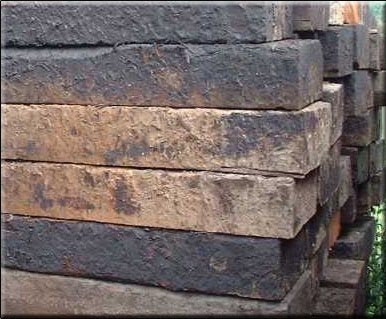Creosote Removal / Remediation
Creosote remediation and containment is one task that has historically involved the use of strong chemical sprays and laborious scraping in cramped quarters like crawl spaces and attics. Creosote is that unpleasant substance that is most often used to preserve the wood used in damp or wet locations … think dock pilings, telephone poles, and oceanfront construction timber. While creosote is definitely one of the best preservatives for wood, it is highly toxic.
Exposure to creosote can lead to serious health problems over time. Homeowners should be careful not to come in physical contact with creosote and should also take precautions to protect themselves from creosote off-gassing or volatilization. Volatilization occurs when the creosote surface residues change from a solid state to a gas or vapor. Once airborne, creosote gases can permeate all the nooks and crannies of a home.
The EPA does not recommend the use of creosote- or pentachlorophenol-treated wood in the interiors of homes because these chemicals may volatilize from the wood into the indoor air. They can be irritating to the respiratory tract and EPA considers creosote to be a “probable human carcinogens” based on scientific studies. The sale of CCA-treated wood for residential uses has been phased out.
EPA and some contractors suggest that you can reduce exposure to creosote pesticides if treated wood is already present in your home by painting the wood with two coats of shellac, varnish or an oil-based paint, this reducing off-gassing of the creosote pesticides.
Unfortunately, in the real world applications: shellacs, varnishes and oil paints generally do not stick to creosote and the phenomenon of creosote off-gassing is not solved.
EnviroShield products create an effective barrier to creosote off-gassing and will adhere to surfaces where are other products fail.


